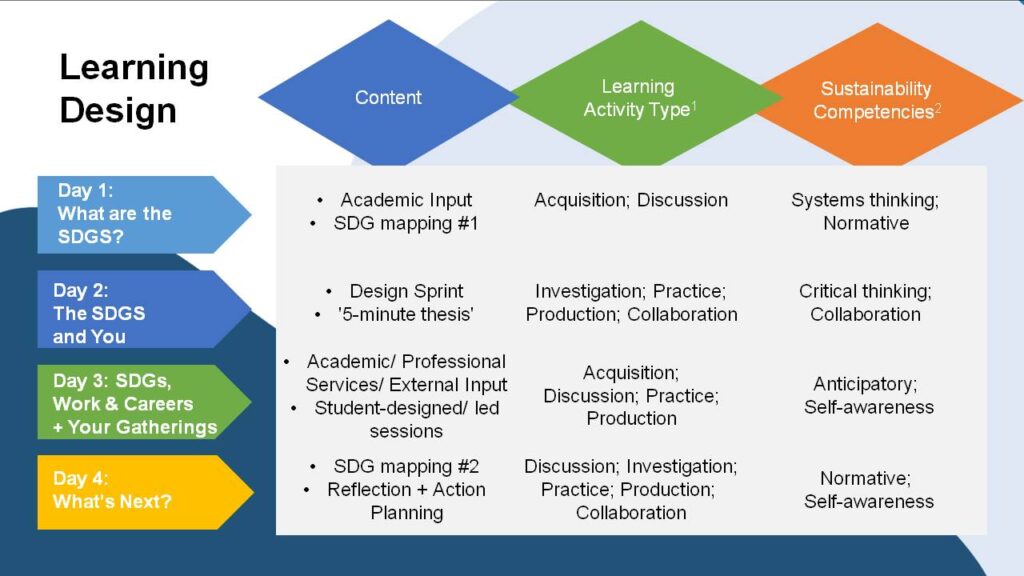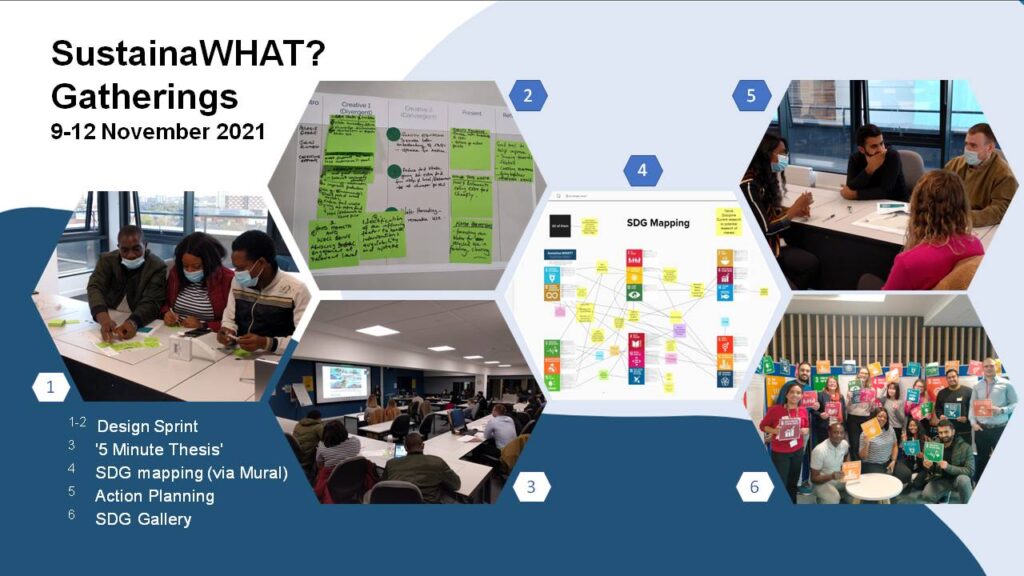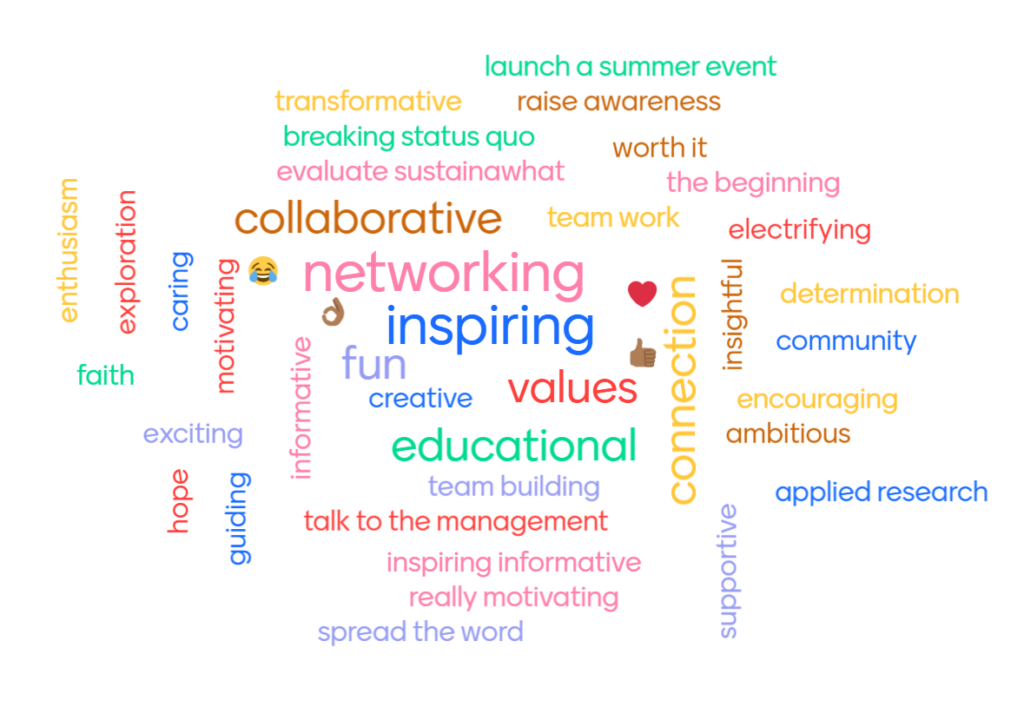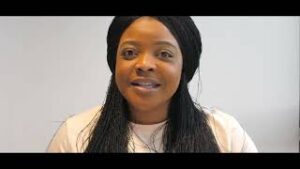Rosalind Beaumont, Senior Lecturer
School X
Faculty of Humanities and Social Sciences
What did you do?
The SustainaWHAT? Gatherings were a co-created cross-faculty series of events held during COP26 (November 2021) that aimed to increase awareness of the UNSDGs and their relationship to PGR student research.
Who is involved?
The gatherings were co-created by the newly formed PGR Research and Education for Sustainable Development Team (PGR RESD) – a multidisciplinary group of PGRs from across Newcastle University. PGR RESD aims to create spaces for students to explore sustainable development through different lenses with a view to enhancing researcher, professional, and personal development:
Wahbi Albasyouni – PGR, Architecture, Planning & Landscape
Jecel Censoro – PGR, Politics
Anna Christy – PGR, Engineering
Duong Nguyen – PGR, Marketing
Andy Oroke – PGR, Engineering
Anand Roy – PGR, Business & Sustainability
Rosalind Beaumont – Senior Lecturer, Faculty Research Training Programme, School X
And
Chris Fan – UG, Film Practices
How did you do it?
The scoping stage for this work took place of following a January 2021 call out from our Deputy Vice Chancellor, Professor Julie Sanders, on how we could respond to COP26 (in addition to existing sustainability, UNSDG and climate action work ongoing at Newcastle). Ros had an idea to offer Newcastle PGR students opportunities to come together to explore and discuss their research through the lens of sustainable development, whilst simultaneously providing professional and personal development, and to provide networking and community development for early stage PGRs. Ros consulted with a range of colleagues to further develop the idea before getting some funding in September for a series of Enrichment Week events which overlapped with COP26 taking place in the November.
Overall Programme Design and Learning Design Principles
On the left-hand side of Figure 1 is an overview of the four days and themes which took students on a journey from an introduction to, or deepening of their understanding of, the SDGS, to opportunities to explore the value and significance of the SDGs through the lenses of their own research, personal motivations and career development, and finally to reflect on their experiences and learning, and to decide what they wanted to do next.

Figure 1: Summary of SustainaWHAT? Gatherings programme mapped onto underpinning learning design principles.
The aim was to provide a balance of input, discussion, problem-solving and opportunities to network and collaborate with students across disciplines. We drew on UNESCO’s Sustainability Competencies (HE Advance and QAA, 2021) and other models of interdisciplinary pedagogy (Edelbroek, Mijinders and Post, 2018) during learning design to plan and offer engaging activities to develop core competencies of critical thinking, collaboration and reflection which would in turn be transferable to PGR research, professional and/ or personal contexts.
To create this student-centred learning environment, we drew on Diane Laurillard and her University College London colleagues work on Learning Activities (Laurillard, 2012). This was particularly useful as it suggested ways of achieving similar outcomes with both conventional and digital teaching tools – perfect for our hybrid setting.
Why did you do it?
Research into Sustainable Development and related fields can often be viewed as more evident or relevant in science or engineering disciplines, rather than in the humanities or social sciences (Nakweya, 2017; Marcone, 2022).
Anecdotally, we found that PGR students actively researching SD-related topics (or those who don’t currently perceive the SD connection with their research) can have limited awareness of the necessity of interdisciplinary understandings, and the value for collaborative working across disciplines, to effectively address the complex societal and environmental challenges.
This perception was reflected in our discussions with colleagues (academics, researchers + PGR students) on topics like sustainability or sustainable development, which often evoked responses like “Sustaina-WHAT?”. These responses became the main motivation of our team – we wanted people from across disciplines to come together and unitedly discuss a topic that relates to all, in one form or another.
We chose the United Nations Sustainable Development Goals (UNSDGs) as the focus of SustainaWHAT as the SDGs offer a tangible way of working on a range of societal and environmental issues using an internationally shared discourse. Importantly, the SDGS explicitly recognise the interplay across these issues, and within/ between disciplines. If you take any research focus or project, it’s unlikely that you wouldn’t be able to see how the SDGs are represented therein or at least have related implications).
Does it work?
1.Attendance and Representation:
Around 40 students and 18 staff attended the event, including members of the University’s Senior Management Team, and 6 external contributors, including Chi Onwurah MP. Multiple disciplines were represented. From a Faculty perspective, it was a HaSS (60%); SAgE (30%), FMS (10%) split (staff/ students). Also, alongside academic colleagues from all three faculties, Careers and the Sustainability Team colleagues participated in the Gatherings.

Figure 2: Summary of images from SustainaWHAT Gatherings
2.PGR Student Feedback:
a. PGR attendee feedback was overwhelming positive (see Figure 3 below, indicative Mentimeter poll results from the final morning) and suggested that we had achieved a number of our project objectives:

Figure 3: Attendee responses on Day 4: Describe your overall experience of SustainaWHAT?
b. Daily polls were conducted via Mentimeter to be accessible to those attending in-person and online. We sought to capture attendee self-ratings (0-10) of their expectations at the start and the extent to which they felt these had been met at the end. Our findings suggest that students perceived clear benefits from their engagement in the events in terms of:
- Increasing their understanding of the UNSDGs and relevance to own discipline/ research contexts
- Gaining knowledge and skills to build their future careers
- Gaining inspiration for their personal development
- Networking with other students, staff and external contributors
3. Student-produced film of student and staff experiences
We also gathered impressions of student experiences using question prompts during in-person networking during the four days, and some attendees volunteered to be interviewed on camera by an undergraduate Film Practices student, Chris Fan. Chris created a short film using extracts from student, as well as staff, perspectives.
Watch the 4 minute video: https://youtu.be/w8Vt-E-Mzt0
4. Effectiveness of Collaborative Working Across Disciplines
The PGR RESD team also self-evaluated their experiences of collaborative working – the first time for some of them work across disciplines and faculties on a shared endeavour – through a 14-question survey. In summary, the team felt it worked well together given the time pressure and hybrid limitations that were faced. Every team member felt this team worked better than an average team would have, with all team members scoring the team performance an 8 or above (out of a maximum score of 10).
Graduate Framework
This approach develops the following attributes:
- Socially Responsible
- Future focused
- Resilient
- Critical Thinkers
- Confident
- Creative, Innovative and Enterprising
- Digitally Capable
- Curious
- Collaborative
- Engaged
Find out more about the Graduate Framework
References
- HEAdvance and QAA (2021) Education for Sustainable Development Guidance. The Quality Assurance Agency for Higher Education and Advance HE (March 2021).
UNESCO (2017) Education for Sustainable Development Goals: learning objectives. UNSECO. - Edelbroek, H., Mijinders, M., and Post, G. (2018) Interdisciplinary Learning Activities. Amsterdam University Press: Amsterdam.
- Laurillard, D. (2012). Teaching as a Design Science: Building Pedagogical Patterns for Learning and Technology. New York and London: Routledge.
ABC LD (2020). ABC Learning Design Toolkit [https://abc-ld.org/]. - Nakweya, G. (2017) STEM vs humanities – Calls for a more balanced approach. University World News – Africa Edition. 22 September 2017. Accessed from : https://www.universityworldnews.com/post.php?story=20170922110921343
Marcone, G. (2022) Humanities and Social Sciences in Relation to Sustainable Development Goals and STEM Education.
Sustainability, 14, 3279. https://doi.org/10.3390/su14063279

